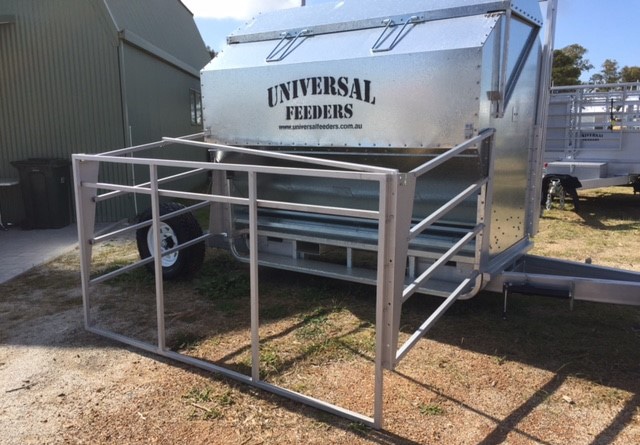Laying the groundwork for weaning calves early
20 August 2024
 Dr Enoch Berman will be using Universal feeders on her property to introduce calves to feed in preparation for early weaning.
Dr Enoch Berman will be using Universal feeders on her property to introduce calves to feed in preparation for early weaning.
|
Project update – ‘Optimising age of weaning cattle’ Producer Demonstration Site (PDS) This project update was written by Dr Enoch Bergman, the lead researcher for the ‘Optimising Age of Weaning Cattle’ PDS. The MLA-funded PDS is a three-year project run by ASHEEP & BEEF in collaboration with Swans Veterinary Services and local producers. The project aims to demonstrate that weaning cattle 60 days earlier than each participant’s current practice has the potential to improve pasture use efficiency, allowing:
|
We know cows and calves consume far greater quantities of feed when co-grazed than when separated. This project’s target is to show that calves weaned earlier can reduce the feed requirements of the cows within a production system without significantly reducing the quality or weight of the calves themselves.
Last season was our first year of the project – and we learned some hard lessons. We found that the cows whose calves were weaned did enjoy a measurable and visually obvious advantage over their herd mates whose calves remained unweaned. Had we realised the season that was upon us, perhaps more producers would have implemented early weaning across a larger portion of their herd, as the season started poorly and ended early.
However, the poor season (which would have been good motivation to wean calves early to protect their dams) also meant that in many cases, the calves weaned early were transitioned onto feedstuffs which weren’t optimal for ensuring the weaned calves went forward. As the lead researcher on the project, I was actually quite distressed by the reduction in weights we saw in some instances, as were the participating producers. As the season progressed, the benefits to the cows whose calves had been weaned earlier became more evident, and interest in the project is beginning to become more positive in nature.
As we head into the next season, we’re very interested to see what reproductive advantages may have been conferred to the cows whose calves had been weaned early and whether those cows have maintained a better body condition score than their herd mates.
Participating producers who had sold their calves at weaning or shortly after weaning have crystalised their losses regarding the weight check the weaned calves suffered, however, the enrolled producers who held on to their calves as future grass-finished cattle, as well as the replacement heifers derived from the early-weaned groups, will provide some further information regarding the longer-term implications of early weaning.
Early weaning (weaning earlier than we traditionally wean locally) has been well documented to potentially improve the stocking density of individual production systems and to improve the kilograms of beef turned off per hectare by redirecting feed being used to produce milk to feed being fed directly to calves with greater nutritional efficiency. However, weaned calves require more digestible protein than adult cows. To continue to grow at a reasonable rate, early-weaned calves must receive nutrition that meets their requirements.
Protein and carbohydrate supplementation in the paddock is a common practice among local sheep producers and some beef producers. In light of the tough seasonal conditions, some producers are feeding pellets or grain mixes to their cows with calves at foot. I am one of those producers. I have purchased four Universal lick feeders from UTF in Goomalling and am supplementing my cows in the paddock along with my dwindling supply of hay and straw.
In preparation for another poor season (should we get a repeat of last year), I have ordered creep feeders to bolt to my Universal feeders once the paddock feed is sufficient to support our breeders.
My logic is to allow the cows to train our calves to access the lick feeders before we convert the feeders to creep feeders. Should we need to wean our calves early this season, they can be supplemented in the paddock on a feedstuff they’re already familiar with. I’m confident that if we can keep the protein level of the feed around 16–18%, they should continue to gain weight at a similar rate than they would have had they stayed on their mothers without sacrificing her body condition and wasting precious feed.
The point of this article is to acknowledge that early weaning can be a very useful tool, but it’s important to utilise it effectively and plan ahead. Calves require better nutrition than cows to continue to thrive, with protein being especially important. If you’re being pushed into a corner, having to wean early, or even if you want to wean earlier in order to run more breeders in your enterprise, having a plan for those weaners is critical.


